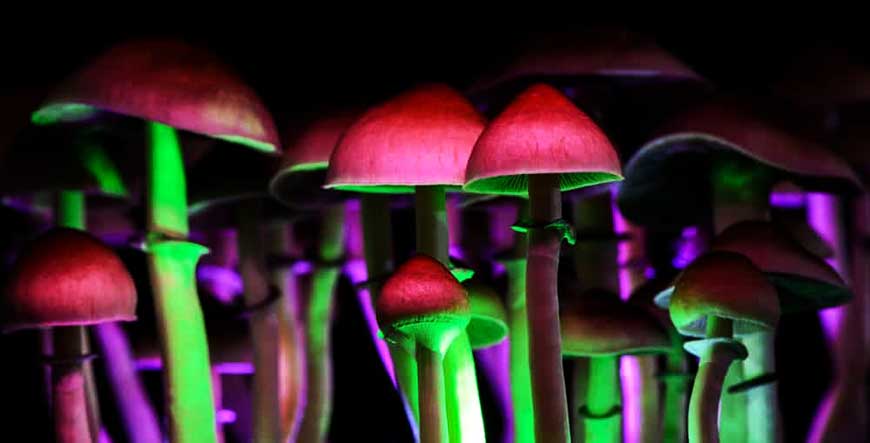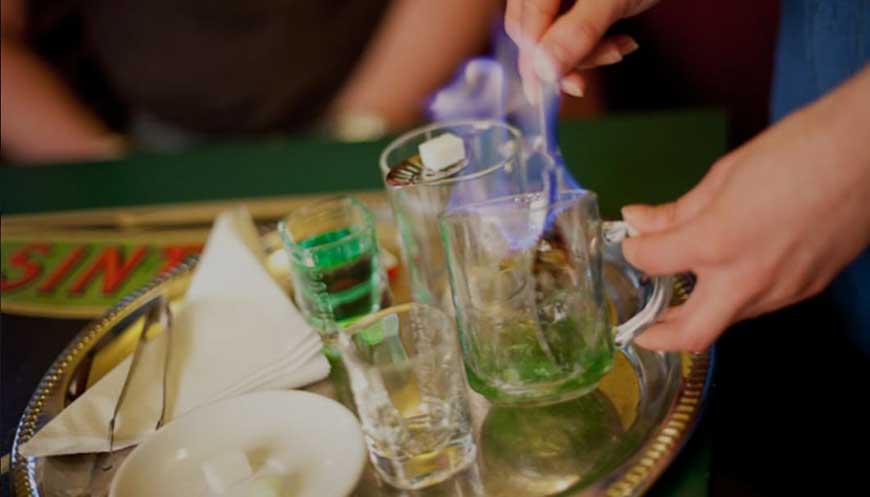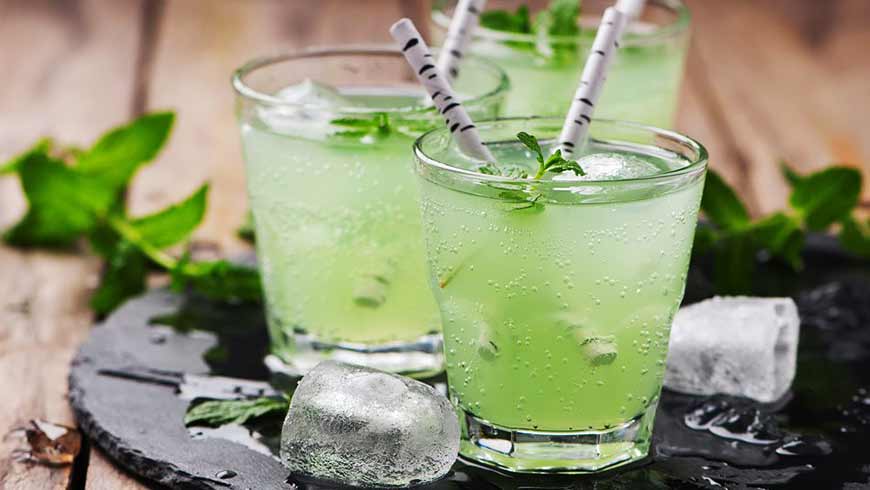5 Biggest Absinthe Myths Finally Busted!
Absinthe, or the green fairy as it’s popularly referred to, is a spirit that carries a deep mysterious beauty with its elegant green colors and intense punch.
As the vilifying stories that encompass the drink that is often called the Green Fairy or La Fée Verte became popular, such as, the drink became the mythical elixir that caused psychedelic effects. The pressure to ban the drink began to build among medical communities and policymakers.
The drink was popular in several parts of the world until a century ago when several countries began to implement bans. Yet, the drink managed to maintain a popular niche.
Truth be told, absinthe is a delicious herbal portion with mind-blowing aroma and flavors of botanical marvels that can be a lovely drink to relish anytime you like. There are several myths around this green beverage that could be quite deceiving.
Here we debunk five popular myths about absinthe.
1. Absinthe Is Just a Strong Liquor
Absinthe is a popular alcoholic drink in several parts of the world. Although it’s a spirit, the liquid is often confused with liquors, especially among anise-flavored liquors, as it’s a common ingredient in both beverages.
A liquor is a beverage prepared with a portion of alcohol and sugar, whereas absinthe is simply a high-proof alcohol, which is strong and punchy. Absinthe is very similar to gin, except the choice of flavoring differs. For example, absinthe includes macerated botanicals that transfer flavors to a 70 percent neutral alcohol base to create this mythical liquid.
The distillation process of some herbs with the base alcohol slowly passes the intense aroma and flavors to the distillate that also gets diluted in the process. A traditional distillation process for absinthe includes blending fennel, grand wormwood, hyssop, and coriander in a neutral base. The distillate is clear and is sold as White Absinthe (absinthe 'blanche', white or colourless absinthe, known as 'la Bleue' in Switzerland).
Steeping or a second distillation process with green anise and other chlorophyll-rich herbs gives the glorious hues of characteristic green to the beverage. Certain brands today use other natural colors such as creating a red hue with hibiscus.
Some less-reputable distilleries also use artificial colors or dyes to achieve the color like E133, although the traditional method is steeping it with herbs to add some amazing flavors along with color compounds. Our advice is to you is to stay away from artificial colored absinthes!
There are certain modern preparation methods where the choice of base is not necessarily neutral. Some companies have also worked with experimental bases such as from Chardonnay grapes and Chilean pisco that could add a refreshing touch of flavors to the drink. They also tend to skip the steeping process and sell clear absinthe referred to as Blanche.

2. Absinthe Is a Hallucinogen
The advertising of absinthe in 19th-century European culture, when it became one of the most popular drinks, portrayed it with a mythical green fairy offering a drink that will get them really drunk very fast. The drink became extremely popular in a short period. With time, myths grew that this exotic green liquid could alter a person`s mind. In reality, absinthe does comprise of psychoactive fixings. Thujone is a psychoactive result of a herb called wormwood; in the event that you're having absinthe with wormwood, at that point you better prepare for some strange visuals.
The magical green liquid initiates similar effects like most alcoholic beverages, such as vodka or tequila, along with making the person feel rejuvenated and fresh. It has slightly bold flavors of spices compared to other drinks, but the effects of light-headedness is like that of some other premium spirits such as rare whisky or cognac.
One of the common reasons behind the truth that absinthe does, in fact, cause mind-altering effects is the presence of a compound called thujone.
A critical herb used in preparing absinthe is grand wormwood or artemisia absinthium. The plant has been a part of several cultures across the world with religious and medicinal applications.
Wormwood extracts contain a chemical known as thujone that could cause severe intoxication with mind-altering side effects, such as seizures, excitability, and convulsions when used in extremely high doses. Thujone is the main reason why the spirit could initiate hallucinogenic effects.
Commercially manufactured absinthes often contains very small amounts of thujone to curb any possible problems, such as heavy intoxication. Hence, consuming absinthe prepared with thujone well within the safety limits can be an exciting and fun experience without causing any risks. Absinthe available in the US can't surpass 10 ppm (parts per milligram) of thujone, in this manner it is technically without thujone.
3. Absinthe Hails From The Czech Republic
The origin of absinthe is one of the biggest myths. While some believe that absinthe hails from Eastern Europe, there are theories that the green liquid is from the Czech Republic.
The reason behind this myth is that Czech distributors were actively involved in several absinthe marketing campaigns in the early days. Towards the 1900s, near the Velvet Revolution, tourists flocked in the region to pay premium prices for a bottle of the mythical green spirit.
Also, the drink became a popular part of parlor culture in the Eastern Europe region during the late 19th century, so much so that it was the ‘hip’ drink of the period. Scrolling back in time, the true origins of the drink take us to Switzerland and the South Eastern Border of France, where the popularization and commercialization of the drink began during the early 19th Century.
Absinthe is believed to have been first created in 1792 in Switzerland by Dr. Ordinaire, who prescribed it for treating several diseases including epilepsy, colic, kidney stones, and gout. The mystic color and flavors of the liquid began to draw the attention of artists and poets who contributed significantly to the 700,000 liters of the spirit consumed in 1874 alone.
The 19th century saw an exponential jump with more than 36 million liters of absinthe consumed in France every year. The number was, infact, higher than the average wine consumption of the region by many folds.
The Czech Republic was among the first few regions to popularize the drink since the 1860s, and the drink was continuously produced even after the ban in 1915 until World War II. Czech Republic was responsible for spreading the drink across the world and many believe that absinthe hails from this region.
The absolute best, wine-liquor based, genuine absinthes with elevated level of thujone are being created in the Czech Republic. Due to bring down degrees of anise, Czech absinthe doesn't create a louche (turning cloudy) when weakened with frosted water.
4. The Ban Was to Protect People From Its Hallucinogenic Effects
The story of how absinthe rose to become a poison and public enemy in the 20th century does indicate that the drink initiates psychedelic effects. One of the most popular incidents was tied up to the hallucinogenic effects of absinthe that single handedly managed to gather a lot of support to ban the product. But many believe that despite varying levels of thujone in absinthe produced in the early days, the ban had very little to do with hallucinogenic effects.
A movement to abolish all alcoholic drinks and recreational drugs began during that time, and absinthe climbed to the top quicker than expected after an incident in 1905.
A Swiss farmer in his early 30s went on a rampage, killing his wife and two daughters over not shining his shoes, after which he tried to shoot himself. The incident sparked a lot of questions among the local communities as the man was heavily intoxicated during the incident.
Although it is said that the farmer had consumed a lot of drinks since the morning, including strong caffeine, crème de menthe, wine, brandy, cognac, and absinthe. So, the Temperance Movement held absinthe as the culprit for his behavior. The story helped to gather over 82,000 signatures in a short period that led to the ban of the drink towards the beginning of World War I in France.
But many believe that the real reason for this extreme step was to protect the interests of pro-wine lobbyists who considered absinthe as a threat to wine markets.
The French went on a purposeful publicity battle against absinthe not long after their grape vineyards began to recuperate from the blight curse that annihilated huge numbers of the vineyards. Absinthe was less expensive and unquestionably snuck up all of a sudden than wine, opium was really mainstream too in France, consequently the visualizations when joined with spirits that were 140 proof. It was hard to persuade the French individuals to drink wine rather than absinthe so destroying it as toxic substance was what they did. Kinda like what the congregation bunch did when they financed the film Reefer Madness.
The spirit was banned quickly in several countries, including the US, Europe, Belgium, Austria, Hungary, and Switzerland. The ban was eventually lifted in many parts of Europe in the late 21st century, and today the drink is again among the most popular spirits across the globe.

5. Absinthe Is Always Served With a Flaming Sugar Cube
Serving absinthe with a flaming sugar cube is the best way to enjoy the drink is one of the biggest myths. It started as a great marketing technique, and many absinthe lovers share that this presentation tends to ruin the true flavors of the spirit.
The caramelized sugar particles do not match well with the flavor palate of the absinthe and could end up ruining its original taste and aroma.
Traditionally, the Swiss placed a sugar cube on a spoon at the rim of the glass and poured cold water to wash the particles into the drink. It formed a cloudy, diluted version of the spirit, in milky hues of green.
Apart from adding a good balance to the palate, the cloudy effect created a great presentation. Also, the sugar helped to compensate for its strong bitter taste. Both the French and Swiss add anywhere between two to three parts of ice-cold water to one part of absinthe to create the perfect drink.
Please see this handy absinthe dilution guide on water/absinthe to get a more detailed view on absinthe.
There are several notable cocktail concepts with absinthe that include the Rattlesnake, Sazerac, and Brunelle that blend absinthe’s natural flavors with some exciting ingredients such as rye whiskey and bitters.

Despite the many myths that exist around this spirit, it has managed to stay popular among many generations with its exemplary taste that hails from the strong choice of botanical herbs.
Several companies today produce commercial absinthe with a varying base such as brandy and an intense citrus aroma to include more flavors to the traditional recipe. These are comparatively smooth and also contain thujone in lower quantities to provide a fun and safe experience.
There are only handful of producers that make genuine absinthe with high level of thujone, the strongest being King of Spirits Gold with 100mg of thujone. It is a superior product that is as close to a pre-ban absinthe as possible.
This elegant spirit that can get anyone super drunk super-fast is a worthy addition to bar cabinets.






